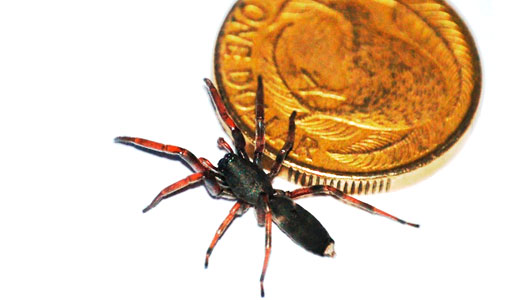Pest Control - Spiders
Pest Control Specialists are experienced in Spider extermination and Spider control and prevention methods throughout the Hawkes Bay and Manawatu. If you need help or advice just give us a call on 0800 737 872

Spiders in New Zealand
There are over 35,000 species of spiders world-wide. New Zealand has about 2600 described spider species with many more still undescribed and most are native.
The largest spider in New Zealand is the Nelson cave spider with a 30mm body length and a leg span of up to 130mm. The Australian white-tailed spider, first recorded in New Zealand in 1886, has been falsely attributed as the cause of many necrotising spider bites. The Avondale spider, also from Australia, was accidentally introduced to New Zealand in the early 1920s in shipments of hardwood logs used for railway sleepers. The spiders, which are considered harmless to humans, have been collected for use in at least two films.
Very few New Zealand spiders have bites which can cause significant injury to humans, and of these, only the Katipo is native. Katipo bites have been known to cause systemic effects, such as hypertension, seizure, or coma, though no deaths as a result of Katipo bites have been recorded for over 200 years. Its more dangerous close relative, the venomous Australian Redback spider, has established a foothold in some parts of New Zealand, notably in Taranaki and Central Otago.
Spiders - behaviour and habits
Many species of spiders are household pests. Wherever their food is available, spiders are likely to be found. All spiders are predators, feeding mainly on insects and other small arthropods.
Female spiders usually do not eat their mate after copulation. In a week or more after mating, the female deposits as few as 20-30 to several hundred eggs in a silken sac. Depending on the species, one or more sacs may be made. Species which tend their egg sacs or young usually produce fewer eggs. It may be weeks later, or not until the following spring, before the spiderlings hatch and/or emerge from the sac.
The early instars and sometimes the males of many species will climb to a high point within suitable air currents, spin silk threads into the air and float out on the breeze like kites. This is called ballooning and provides for general dispersal of the species. Spiderlings go through 4 to 12 molts before maturity. Most spiders live for 1 or 2 seasons, but a few live from 5-20 years. Spiders are predators, paralysing or killing their prey with venom. They typically feed by injecting a pre-digestive fluid into the body of their prey and then suck in the digested liquid food. Spiders can survive without food for several weeks to a few months.
Most spiders are nocturnal or active at night and will scurry away when disturbed unless they are tending egg sacs or young. During the day, they usually remain hidden and inactive in cracks and crevices, their webs, etc. Spider bites usually result only with great provocation such as squeezing or handling. Bites usually occur when the males are wandering about searching for females or when people clean out neglected places such as basements, attics, or garages, or put on seldom-used clothing. Many spiders cannot penetrate human skin with their fangs and the bite of those that can, usually results in no more than a slight swelling and inflammation. Always consult a physician if a spider bite is suspected. It is particularly important to capture and take the suspect spider along for identification purposes.
Spider Contol
Spider control is a 6-step process and requires a professional control plan to be put in place in order to be effective: Inspection, Identification, Prevention, Sanitation, Mechanical measures and finally Pesticide application. Please contact Pest Control Specialists for more info or to organise an inspection.
"What makes us different is our 15 plus years in the
pest control industry"
Did You Know?
The largest spider in New Zealand is the Nelson cave spider with a 30mm body length and a leg span of up to 130mm.
Did You Know?
Spiders are predators, paralysing or killing their prey with venom. They typically feed by injecting a pre-digestive fluid into the body of their prey and then suck in the digested liquid food.